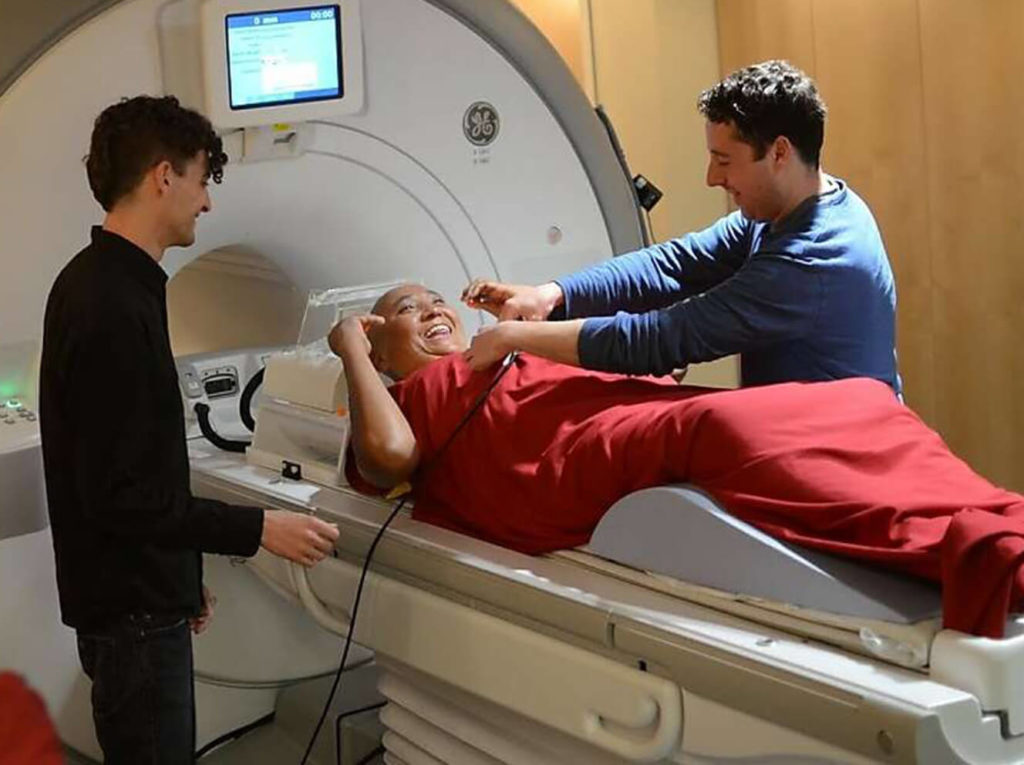My family used to run a neighborhood grocery store. Walking into a supermarket with its florescent lights and low clatter of shopping carts has always felt like a second home. These days such trips can be anxiety producing, even for a grocer’s daughter. But there are strategies you can employ to gain control over grocery shopping, without having to stockpile supplies. Being flexible can also reduce food-related stress. Here’s how to help ensure you’ll have healthy items available in the age of COVID-19.
Plan Your Trip
Before heading out, take time to survey your supplies. Try to include options from a variety of food groups (see here for examples). Consider crafting a list on paper to avoid taking your phone out in the store. Then organize by category, so you won’t need to return to previously visited aisles. For instance, combine your fresh produce. Typically, dairy products and eggs are also lumped together. Often canned and dried fruit are found in the baking aisle, and so on.
Substitute on the Fly
You might have to be flexible when looking for items. Out of canned tomatoes? Check for other preserved options like tomato paste or sun-dried tomatoes. Processed food isn’t always less nutritious. For instance, the lycopene content is 15 times higher in tomato paste compared to fresh tomatoes. Diets high in this plant pigment have been associated with lower risk of certain types of cancer. (Try this recipe, which uses tomato paste along with other pantry staples.)
Are leafy greens, like spinach or kale, looking sparse? Use cabbage, which is typically cheaper and often lasts longer. It can be shredded and added to sandwiches, mixed in soups, and even used as a salad base. One cup provides 25% of your daily need of vitamin C, a nutrient necessary for immune health.
If eggs are out of stock, consider ground flaxseed or chia seeds. While this substitution won’t cooperate for everything, the seeds are a source of heart-healthy omega-3 fats and work well in baked goods like quick breads, muffins, and pancakes. Use a ratio of 1 tablespoon ground seeds to 3 tablespoons of water per egg.

• COVID-19 Healthy Eating From Pantry Staples
• How to Fight Anxiety with Food
• How to Detox Your Body Naturally
• Benefits of Eating Eggs
If rice or pasta products are running low, consider less-used options like couscous or orzo. For those who need to be gluten-free, try corn grits. Or shift the meal to potatoes instead. For instance, rice and beans can become a loaded baked potato using similar ingredients. Think white potatoes are nutritionally skimpy? A baked potato provides about 20% of your daily vitamin C.
Snack Smart During COVID-19
Stress eating is a normal response to our current COVID-19 situation, so ensure you have healthy options available. Try a whole grain snack, like popcorn. You can pop kernels in a paper lunch bag in the microwave. (Add ¼ cup of kernels and fold the top of the bag down an inch or two, then pop for about 2 minutes.) Or bring back a classic snack like celery and peanut butter studded with raisins. No celery? Try crunchy produce like apple slices, carrot sticks, or even fresh fennel, an often neglected anise-flavored vegetable. Dip dried fruits, like apricots and prunes, in melted chocolate. Freezing grapes also makes for an icy snack and helps preserve them.
Protect Your Produce in the Fridge
Once you are home, hold off on washing produce until you need it. Moisture encourages microbial growth and can lead to premature spoilage. Grapes and berries spoil particularly quickly. Leave grapes unwashed on the stem. Berries are an exception. If you want to eat them fresh, wash them in a bowl with one-part vinegar to three-parts water, which will help kill mold spores. Rinse them with water and dry thoroughly with a clean kitchen towel.
You can also breathe life into limp-looking vegetables. The ends of asparagus, celery, and broccoli can be trimmed and placed upright in an inch or so of water. Store in the fridge loosely covered with plastic wrap.
While these tips require a little forethought, they are also skills you can use even after COVID-19 has diminished. Getting creative with shopping can help your local grocer too. In the meantime, keep calm and plan on. You’ve got this.

Emily Gelsomin, MLA, RD, LDN, is a senior clinical nutrition specialist at Massachusetts General Hospital. As a registered dietitian, she counsels on medical nutrition therapy on an outpatient basis and is co-director of Be Fit, the hospital’s employee wellness program.
Jointly sponsored by The Clubs at Charles River Park and MGH Nutrition and Food Services, the 10-week program focuses on helping participants “Be Fit and Eat Right.” Every ten weeks, employees from different departments within the hospital compete with each other as they make a commitment to Be Fit. Through the creation of a social environment at the workplace, participants are supported to make progress in personal lifestyle changes with the help of a unique support system that includes a dedicated nutritionist and personal trainer.
Be Fit strives to create a milieu of wellness that extends beyond the 10-week curriculum by offering features to those who are not part of the intensive program. This includes the creation of Choose Well, Eat Well, a rating system designed to help both employees and patients increase awareness of healthy choices at retail eateries within the hospital. It also includes a monthly e-mail with a timely nutrition tip.




